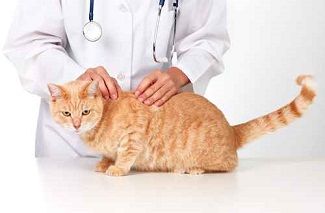New Insights on Feline Skin Microbiota
A recent study has provided insight on the cutaneous bacterial microbiota of healthy cats and cats with allergic skin disease.

A study recently published in PLoS ONE reported similarities and differences between the skin microbiota of healthy and allergic cats, as well as a greater abundance of feline skin bacterial species than previously believed. The study’s findings, the researchers wrote, “provide some evidence of an association between dysbiosis and skin disease.”
The microbiota is a community of microorganisms. An individual’s microbiota, which can be beneficial or pathogenic, varies according to such factors as anatomic location and immune status. Although previous studies have suggested a relationship between skin microbiota and disease, it remains unknown whether changes in skin microbiota contribute to, or result from, disease.
Animal microbiomes have become an increasingly important research area in veterinary medicine. Several studies have evaluated oral and gastrointestinal microbiota in dogs and cats. One study has examined how the canine skin microbiota composition changes with atopic flare-ups and subsequent treatment. To date, though, little research has been performed on feline skin microbiota.
For the current study, researchers collected skin swabs from 11 healthy cats and 10 cats with allergic skin disease. Swabs were collected from anatomic locations that were categorized according to physiology:
- Oral—oral cavity
- Sebaceous—chin
- Haired skin—lumbar, interdigital, pre-aural spaces; axilla, ear canal, dorsal nose, groin
- Mucosal or mucocutaneous junctions—conjunctiva, nostril, genitalia
Genomic DNA was extracted and sequenced from each swab. The genomic data were used to evaluate bacterial species richness (number of bacterial species), diversity, structure, and composition.
Richness and Diversity
Species richness and diversity were generally similar between the skin microbiota of healthy and allergic cats. For both groups of cats, this richness and diversity were highest on areas of haired skin and lowest on mucosal surfaces; previous research on canine skin microbiota reported a similar result.
Structure
In healthy cats, the bacterial community structure clustered according to body site; for example, the bacterial community structure in the axilla differed markedly from that in the nostril. In allergic cats, however, this structure clustered according to the individual.
Composition
Proteobacteria was the most common phylum in the skin microbiota of both healthy and allergic cats. Bacteroidetes was the second-most common phylum, which contrasts with a previous study reporting a smaller abundance of this phylum on canine skin. The researchers noted that, because Bacteroidetes bacteria reside in the oral cavity, the higher abundance of this phylum on cat skin could be due to cats’ grooming behavior.
The skin microbiota of healthy and allergic cats had differential abundances of certain bacteria. Notably, Staphylococcus was more abundant in allergic than healthy cats, indicating a potential association between Staphylococcus and feline allergic skin disease.
Interestingly, healthy and allergic cats had similar ear canal bacterial compositions, suggesting a possible alteration of normal bacterial microbiota during allergic skin disease. Researchers also mentioned that, in cats with allergic skin disease, grooming behavior could cause a single altered bacterial community to colonize the rest of the body.
Given the study’s small sample size, researchers advised a descriptive interpretation of the results and proposed further study of the feline skin microbiota with larger sample sizes. In addition, they noted, examining the feline skin microbiota during a skin allergy flare-up and subsequent treatment could “help elucidate more about the relationship between cats and their microbiota.”
Dr. JoAnna Pendergrass received her Doctor of Veterinary Medicine degree from the Virginia-Maryland College of Veterinary Medicine. Following veterinary school, she completed a postdoctoral fellowship at Emory University’s Yerkes National Primate Research Center. Dr. Pendergrass is the founder and owner of JPen Communications, a medical communications company.